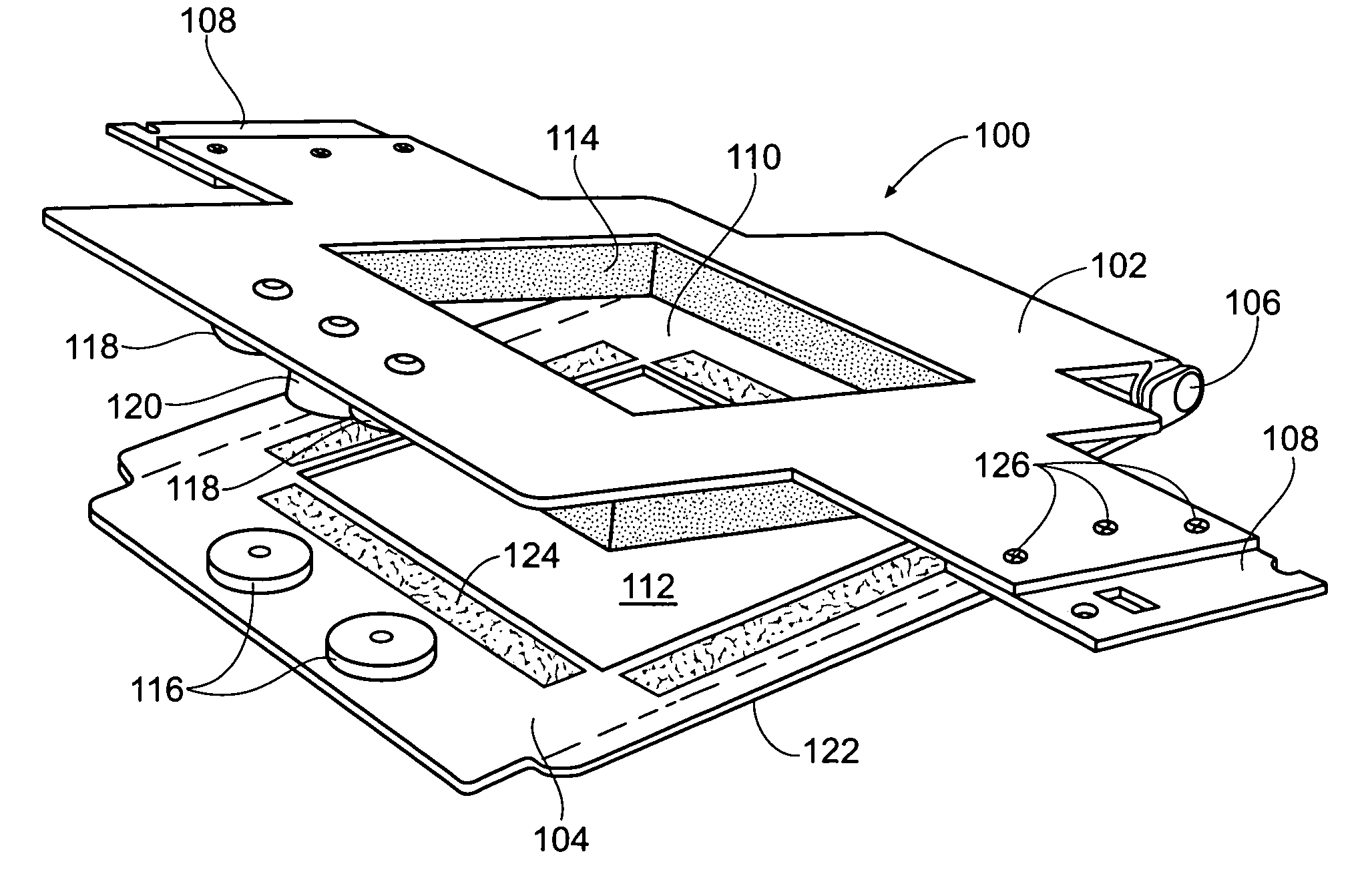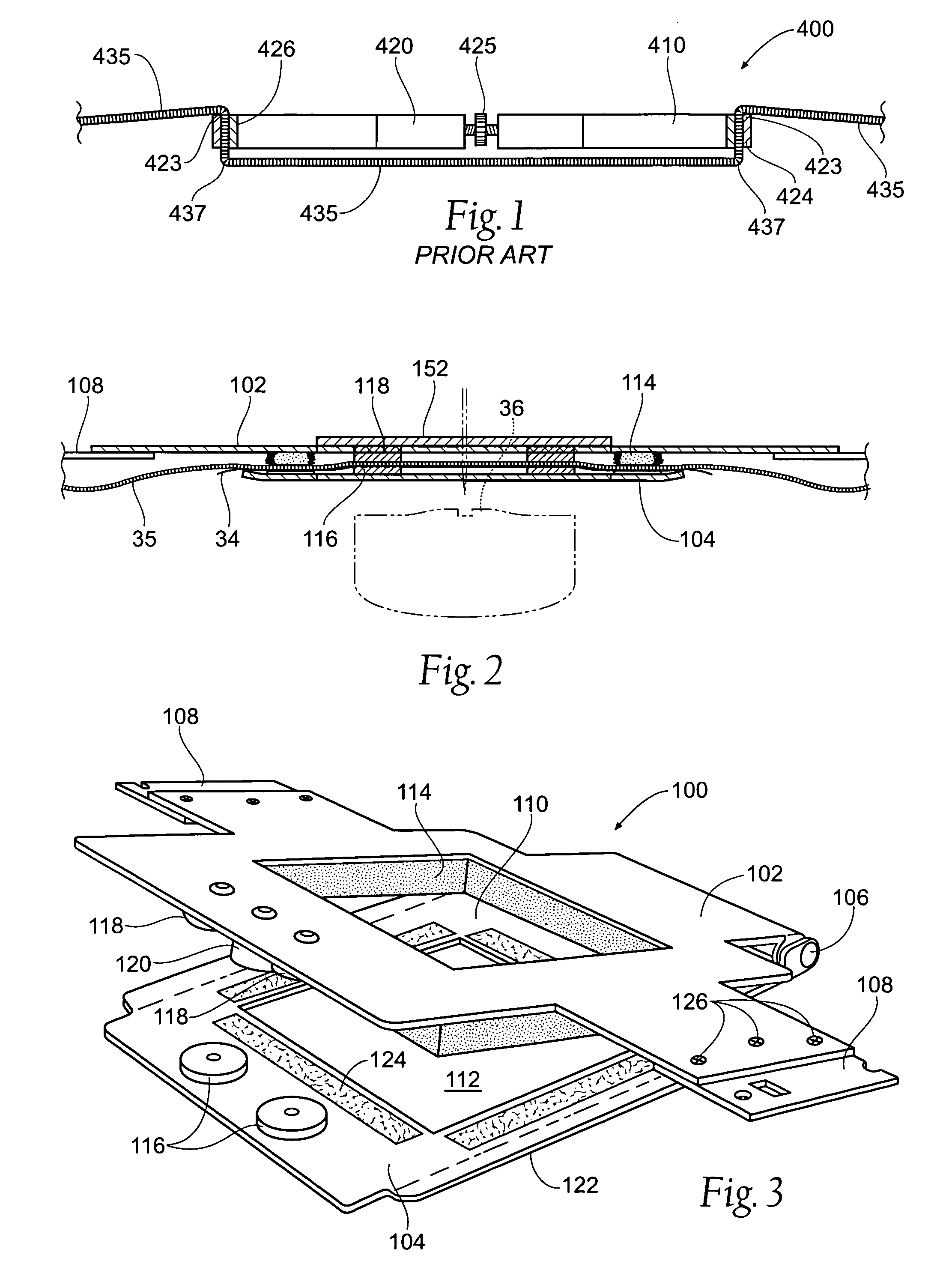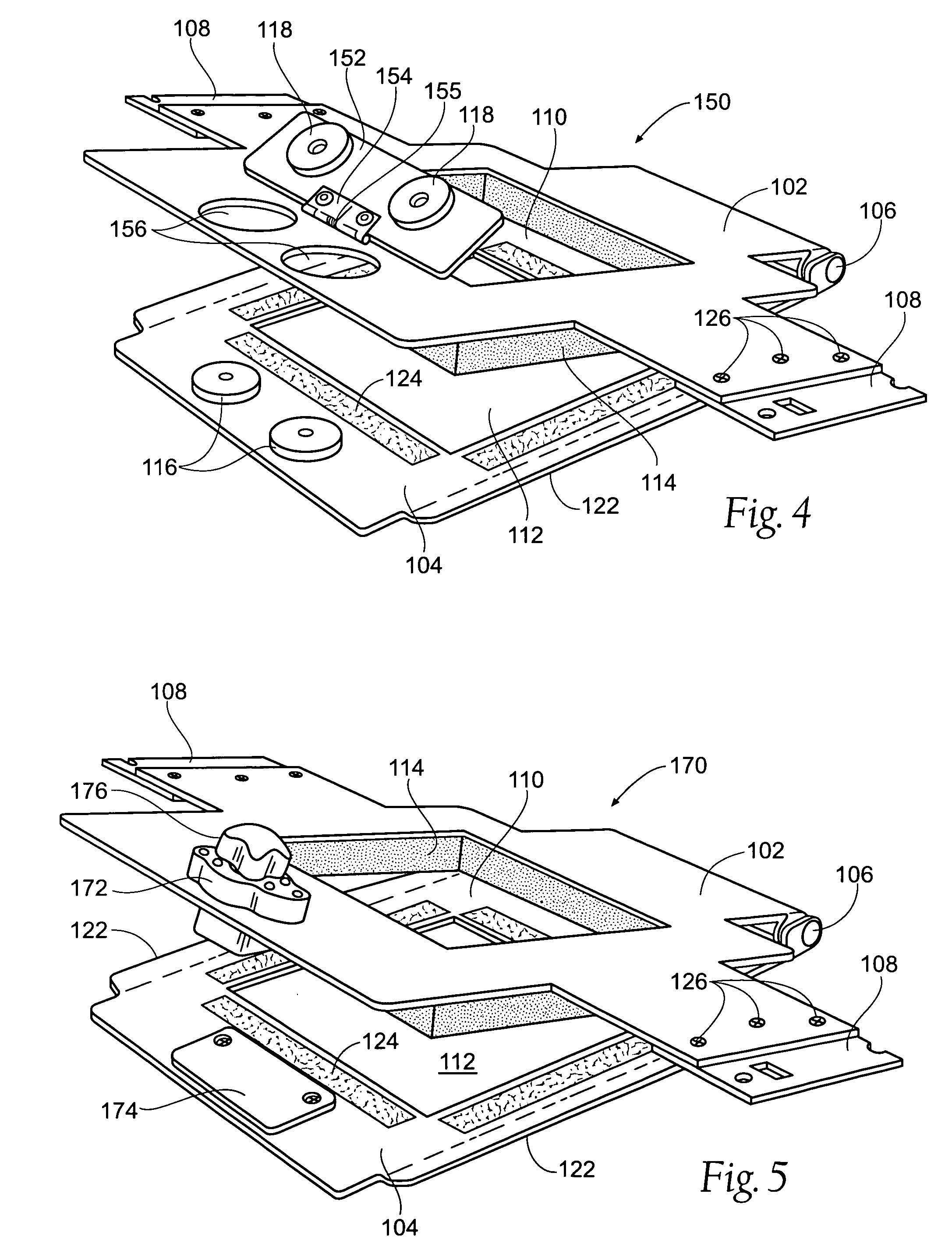Magnetic fabric retaining device
a magnetic fabric and retaining device technology, applied in the field of embroideries and monogramming, can solve the problems of difficult and time-consuming, improper embroidering of items such as items, and difficulty in using standard embroidery hoops, and achieve the effect of convenient application to garments
- Summary
- Abstract
- Description
- Claims
- Application Information
AI Technical Summary
Benefits of technology
Problems solved by technology
Method used
Image
Examples
Embodiment Construction
[0029]Although the disclosure hereof is detailed and exact to enable those skilled in the art to practice the invention, the physical embodiments herein disclosed merely exemplify the invention which may be embodied in other specific structures. While the preferred embodiment has been described, the details may be changed without departing from the invention, which is defined by the claims.
[0030]The present invention provides a hoop used with embroidery machines that is easy to apply to garments of varying thickness and align during the hooping process. Likewise, alignment can be accomplished quickly and efficiently, regardless of the thickness of the material being placed within the hoop, without distorting the area that embroidery is being placed upon.
[0031]FIGS. 1 and 2 compare differences in securing material according to the prior art with the present invention.
[0032]FIG. 1 demonstrates the prior art, while FIG. 2 provides an arrangement according to the present invention.
[0033...
PUM
 Login to View More
Login to View More Abstract
Description
Claims
Application Information
 Login to View More
Login to View More - R&D
- Intellectual Property
- Life Sciences
- Materials
- Tech Scout
- Unparalleled Data Quality
- Higher Quality Content
- 60% Fewer Hallucinations
Browse by: Latest US Patents, China's latest patents, Technical Efficacy Thesaurus, Application Domain, Technology Topic, Popular Technical Reports.
© 2025 PatSnap. All rights reserved.Legal|Privacy policy|Modern Slavery Act Transparency Statement|Sitemap|About US| Contact US: help@patsnap.com



